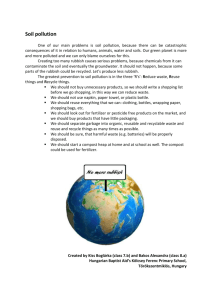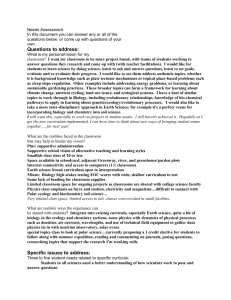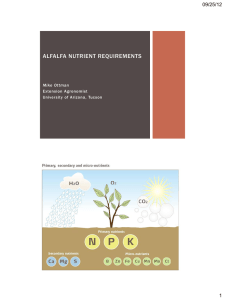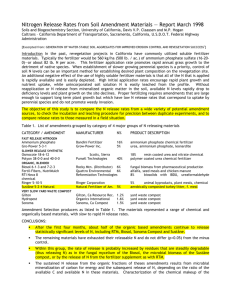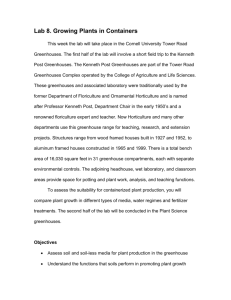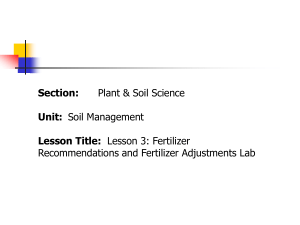Phosphorus: Symbol, P. Major nutrient for plants and
advertisement
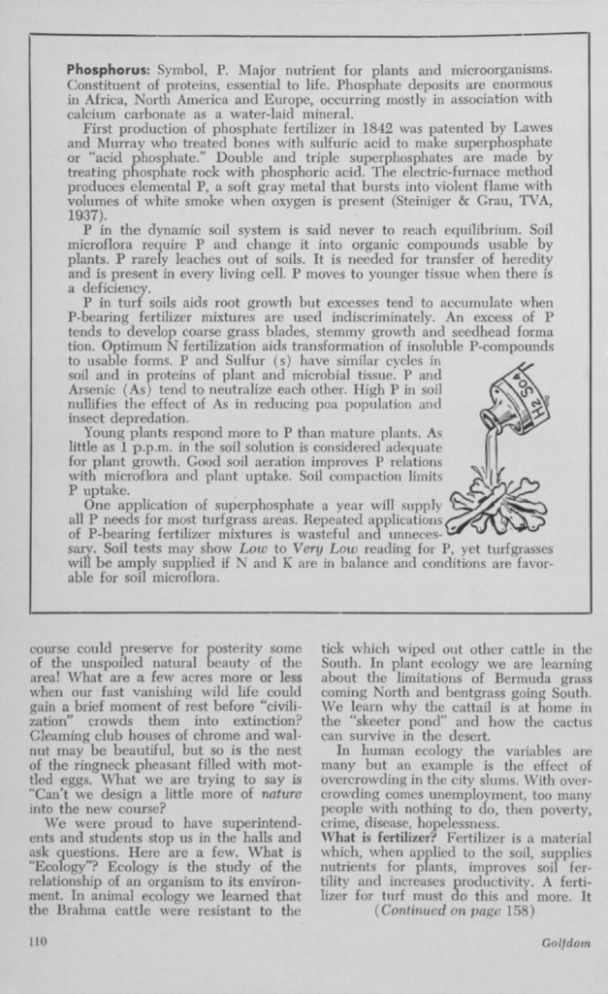
Phosphorus: Symbol, P. Major nutrient for plants and microorganisms. Constituent of proteins, essential to life. Phosphate deposits are enormous in Africa, North America and Europe, occurring mostly in association with calcium carbonate as a water-laid mineral. First production of phosphate fertilizer in 1842 was patented by Lawes and Murray who treated bones with sulfuric acid to make superphosphate or "acid phosphate." D o u b l e and triple superphosphates are made by treating phosphate rock with phosphoric acid. The electric-furnace method produces elemental P, a soft gray metal that bursts into violent flame with volumes of white smoke when oxygen is present (Steiniger & Grau, TVA, 1937). P in the dynamic soil system is said never to reach equilibrium. Soil microflora require P and change it into organic compounds usable by plants. P rarely leaches out of soils. It is needed for transfer of heredity and is present in every living cell. P moves to younger tissue when there is a deficiency. P in turf soils aids root growth but excesses tend to accumulate when P-bearing fertilizer mixtures are used indiscriminately. An excess of P tends to develop coarse grass blades, stemmy growth and seedhead forma tion. O p t i m u m N fertilization aids transformation of insoluble P-compounds to usable forms. P and Sulfur (s) have similar cycles in soil and in proteins of plant and microbial tissue. P and Arsenic (As) tend to neutralize each other. High P in soil nullifies the effect of As in reducing poa population and insect depredation. Young plants respond more to P than mature plants. As little as 1 p.p.m. in the soil solution is considered adequate for plant growth. Good soil aeration improves P relations with microflora and plant uptake. Soil compaction limits P uptake. O n e application of superphosphate a year will supply all P needs for most turfgrass areas. Repeated applications of P-bearing fertilizer mixtures is wasteful and unnecessary. Soil tests may show Low to Very Low reading for P, yet turfgrasses will be amply supplied if N and K are in balance and conditions are favorable for soil microflora. course could preserve for posterity some of the unspoiled natural beauty of the area! W h a t are a few acres more or less when our fast vanishing wild life could gain a brief moment of rest before "civilization" crowds them into extinction? Cleaming club houses of chrome and walnut may be beautiful, but so is the nest of the ringneck pheasant filled with mottled eggs. W h a t we are trying to say is "Can't we design a little more of nature into the new course? W e were proud to have superintendents and students stop us in the halls and ask questions. Here are a few. W h a t is "Ecology"? Ecology is the study of the relationship of an organism to its environment. I n animal ecology we learned that the Brahma cattle were resistant to the tick which wiped out other cattle in the South. In plant ecology we are learning about the limitations of Bermuda grass coming North and bentgrass going South. W e learn why the cattail is at home in the "skeeter pond" and how the cactus can survive in the desert. In human ecology the variables are many but an example is the effect of overcrowding in the city slums. W i t h overcrowding comes unemployment, too many people with nothing to do, then poverty, crime, disease, hopelessness. W h a t is fertilizer? Fertilizer is a material which, when applied to the soil, supplies nutrients for plants, improves soil fertility and increases productivity. A fertilizer for turf must do this and more. It (Continued on page 158)



